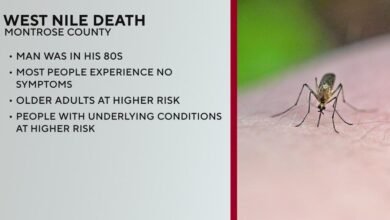Shocking Healthcare Crisis in Central NY: Urgent Call for Nurses Reveals Eye-Opening Strategy!

Addressing the Urgent Nursing Shortage in Central NY: The ‘Grow Your Own’ Approach
The healthcare system in Central New York is currently facing a critical shortage of nurses and healthcare workers, with the demand for these essential professionals surpassing the available supply. As hospitals and clinics struggle to meet the needs of their communities, innovative solutions must be considered to cultivate a stable workforce. One promising strategy is the ‘Grow Your Own’ initiative, which focuses on nurturing local talent to build a robust healthcare workforce from within the community.
The Current Situation: A Call for More Nurses
As various healthcare reports point out, Central New York requires thousands more nurses to ensure that quality healthcare services are accessible and effective. Factors contributing to this shortage include an aging population, increased patient complexity, and the aftermath of the COVID-19 pandemic. As the healthcare landscape continues to evolve, the challenges associated with hiring and retaining qualified nursing staff become even more pronounced.
The nursing workforce crisis is not unique to Central New York; it’s felt across the nation. However, the local context presents unique challenges and opportunities that must be addressed. There are numerous reasons why individuals are hesitant to enter or remain in the nursing profession, such as high levels of stress, demanding hours, and competitive job markets. In light of this, communities and healthcare organizations must adopt strategies to tackle these issues effectively.
Understanding the ‘Grow Your Own’ Initiative
The ‘Grow Your Own’ initiative is a proactive approach aimed at building a sustainable workforce by investing in local students and residents interested in pursuing careers in healthcare. Rather than relying solely on external recruitment, this strategy cultivates talent from within the community, creating a sense of belonging and stability in the workforce.
This initiative often includes partnerships between local colleges, high schools, and healthcare organizations. By collaborating, these entities can create academic programs, internships, and mentorship opportunities that enhance students’ hands-on learning experiences. By doing so, they can encourage young individuals to see nursing not just as a job, but as a career path that can provide long-term satisfaction and growth.
Key Components of the ‘Grow Your Own’ Strategy
1. Educational Partnerships
Educational institutions play a pivotal role in developing and maintaining a skilled nursing workforce. By forming partnerships between local high schools, community colleges, and universities, stakeholders can create a clear pathway for students who aspire to become healthcare professionals.
For example, local high schools can offer health science programs that introduce students to the basics of nursing and other healthcare careers early on. Meanwhile, community colleges can provide accessible nursing programs that accommodate different learning styles and schedules, ultimately increasing the number of qualified nurses entering the workforce.
2. Financial Incentives
Financial incentives are an effective tool to motivate students to enter nursing programs. Scholarships, grants, and loan repayment programs can ease the financial burden that often comes with higher education. Such incentives can be aimed specifically at those who commit to working in underserved areas or in critical care settings post-graduation.
Additionally, there are opportunities for healthcare organizations to offer paid internships or summer employment in nursing-related fields, allowing students to gain valuable experience while earning money and supporting their education.
3. Mentorship Programs
Having strong mentors is critical for aspiring healthcare professionals. Establishing mentorship programs can help bridge the gap between education and practice. By connecting seasoned nurses and healthcare workers with students, young individuals can gain insights into the challenges and rewards of the nursing profession.
This mentorship not only assists students with career guidance but also fosters a supportive community where they feel valued and empowered. Mentors can share their experiences, provide networking opportunities, and even assist students in navigating their educational paths.
4. Community Engagement
Community engagement is a vital aspect of the ‘Grow Your Own’ strategy. Outreach programs that educate the public about the importance of nursing and healthcare careers can inspire younger generations to explore these fields. Hosting health care fairs, workshops, and informational sessions can engage parents and students alike, highlighting the diverse opportunities available in healthcare.
Furthermore, campaigns that celebrate local healthcare heroes and their contributions can foster pride in the profession, motivating others to follow in their footsteps.
Benefits of the ‘Grow Your Own’ Approach
Implementing the ‘Grow Your Own’ initiative in Central New York holds numerous benefits for the region and its healthcare system.
1. Local Talent Development
By focusing on local talent development, communities can create a workforce that is familiar with the patients they serve. These professionals are often more likely to remain in the area long-term, as they are rooted in the community and invested in its well-being.
2. Increased Workforce Stability
Building a sustainable workforce from within can significantly boost job satisfaction, employee morale, and retention rates. When healthcare providers can invest in their own workforce, they cultivate a culture of loyalty and dedication that can reduce turnover and associated hiring costs.
3. Tailored Training Programs
By collaborating with local educational institutions, healthcare organizations can create tailored training programs that meet the specific needs of the community. Customized curriculums can address local health challenges and guide students to develop skills that are directly applicable within their communities.
4. Enhanced Healthcare Quality
More qualified healthcare workers translate to higher-quality patient care. When the workforce is adequately staffed and well-trained, healthcare providers can deliver more efficient and effective services. This can result in improved health outcomes, patient satisfaction, and community trust in the healthcare system.
Taking Action: Next Steps for Central NY
For the ‘Grow Your Own’ initiative to succeed, stakeholders must come together to create a collaborative approach. Healthcare organizations, educational institutions, local governments, and community leaders need to prioritize nursing workforce development as a collective mission.
That includes securing funding for educational initiatives, forging partnerships between institutions, and actively engaging the community in outreach efforts. With a committed effort, Central New York can begin to reverse the trend of nursing shortages and foster a sustainable healthcare workforce for the future.
Conclusion
The pressing need for more nurses and healthcare workers in Central New York cannot be ignored. The solution lies within the community itself, through initiatives like the ‘Grow Your Own’ program. By cultivating local talent, providing educational opportunities, and fostering a supportive environment, communities can ensure a steady stream of qualified healthcare professionals ready to meet the demands of an evolving healthcare system.
Summary
- Central New York is currently facing a severe shortage of nurses and healthcare workers.
- The ‘Grow Your Own’ initiative aims to cultivate local talent to build a sustainable healthcare workforce.
- Key components include educational partnerships, financial incentives, mentorship programs, and community engagement.
- Benefits of this approach include local talent development, increased workforce stability, tailored training programs, and enhanced healthcare quality.
- Collective action among stakeholders is necessary to successfully implement this initiative and meet future healthcare demands.





